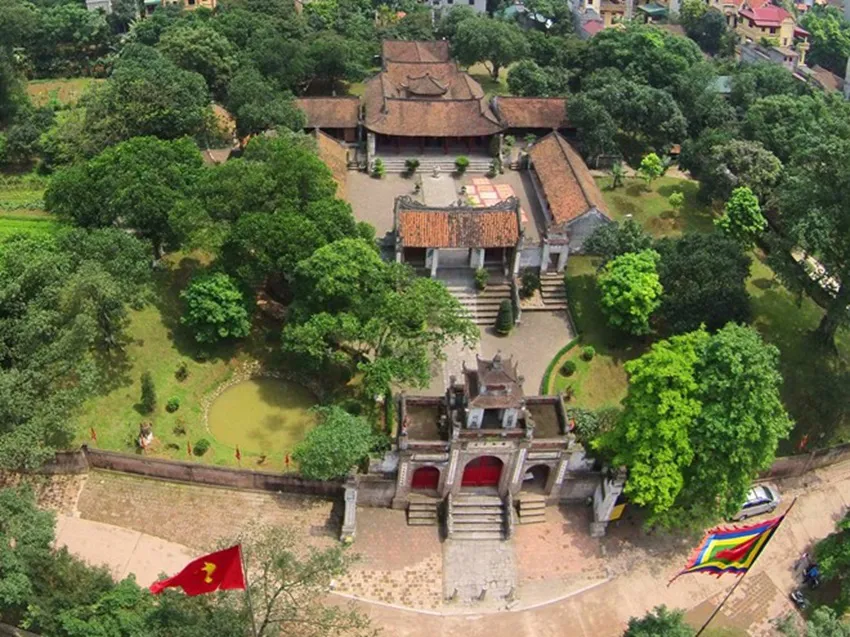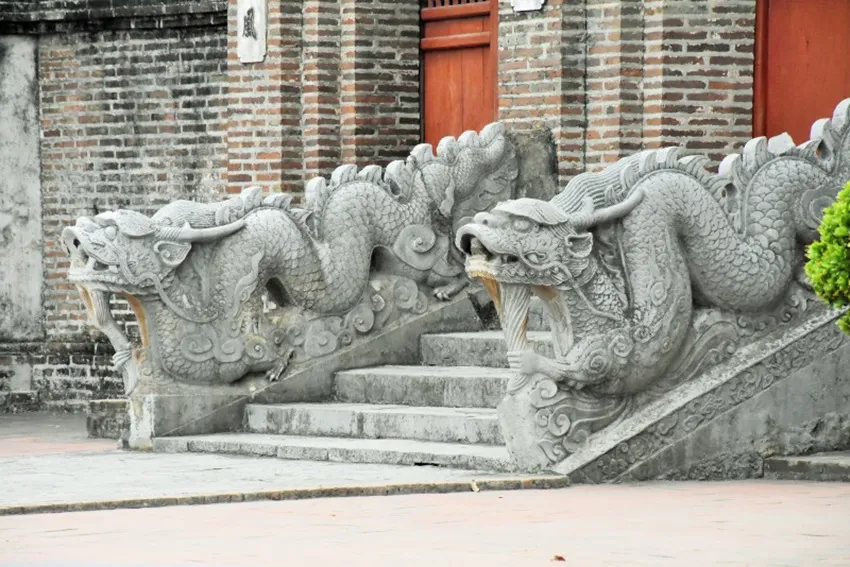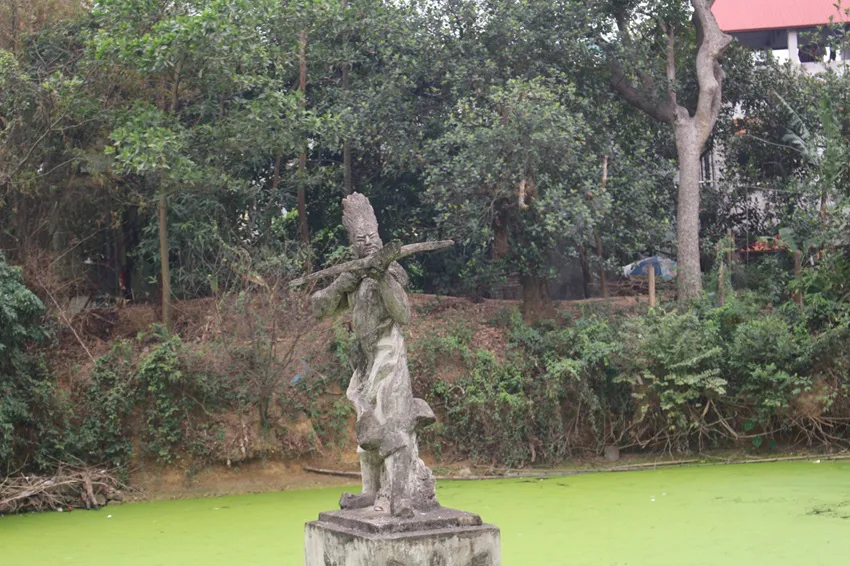Co Loa Ancient Citadel: one-of-a-kind tourist attraction of the capital
Today's Co Loa is not only a cultural heritage, a testament to the ingenuity, technical, and cultural skills of the ancient Vietnamese people but also a fascinating destination for tourists from near and far.
Co Loa Citadel, located about 20 km north of downtown Hanoi, is the oldest building in Vietnam with a long history. Its name "Co Loa" comes from Sino-Vietnamese and means "old spiral", as the structure is shaped like a spiral.
An ideal travel destination in Hanoi
| The Pearl Fountain or My Chau-Trong Thuy Fountain in Co Loa Citadel from a bird's eye view. Photo: Vuong Loc |
Together with the Thang Long Imperial Citadel, the Co Loa Citadel testifies to the thousand-year history of the nation.
The ancient citadel is associated with the legends of Vietnam's ancestors, such as King An Duong Vuong founding the capital and building the citadel, the magic crossbow of Kim Quy (Golden Turtle) shooting down hundreds of invaders at once, or the tragic love story of Princess My Chau and her expatriate husband Trong Thuy. In addition, its wondrous architecture makes it a unique tourist attraction in Hanoi.
Known as the largest ancient citadel in Vietnam, the Co Loa Historical Site covers an area of 500 hectares and was built by King An Duong Vuong in the 3rd century BC after he unified the Au Viet and Lac Viet kingdoms and founded the Au Lac Kingdom. The citadel served as the imperial capital, military base, and commercial center. Today, it is located in Dong Anh District, a suburb of Hanoi City.
An ancient citadel with funky architecture
| Along with the Thang Long Imperial Citadel, the Co Loa Citadel is believed to bear witness to the nation's thousand-year history. Photo: VNA |
Legend has it that the Citadel once consisted of nine concentric layers, which is why it was called the "Ancient Spiral". Due to the ravages of time and war, only three layers of ancient vestiges remain, namely the inner citadel, the middle rampart and the outer rampart.
To begin with, the outer rampart has a perimeter of about eight kilometers and its adjacent moat was dug around it. Its walls are four to five, some were eight to 12, meters high.
Towards the inside, the middle rampart, with a perimeter of 6.5 kilometers and a similar structure to the first, is more solidly built. Finally, the triangular inner citadel covers about two square kilometers and serves as the residence of King An Duong Vuong and his royal court.
As diverse as its layers, Co Loa Citadel has been given many different names, such as Loa (Snail) Citadel, Con Lon Citadel, Tu Long Citadel, Cuu (Nine) Citadel, Viet Vuong Citadel, or Kha Lu Citadel. In the 10th century, after regaining national independence from the
Ngo Quyen chose Co Loa as the nation's capital for the second time.
| The bronze statue of King An Duong Vuong in Co Loa Citadel has been declared a national treasure. Photo: Dan Viet Newspaper |
At present, the Co Loa Relic Site features a number of historical, architectural and artistic relics, including the Thuong (Upper) Temple dedicated to King An Duong Vuong, another to General Cao Lo, a shrine to Princess My Chau, and the Bao Son Pagoda. In turn, these buildings house many archaeological artifacts unearthed in the ancient citadel: bronze statues, bronze arrowheads, delicately carved stone and porcelain items.
A Special National Relic of Vietnam
Co Loa is undoubtedly a cultural heritage site that demonstrates the creativity, techniques and culture of Vietnam's ancestors in defending the country against foreign invaders. At the same time, the site has become an ideal destination for tourists from all over the world to explore the cultural values and typical scenery of a peaceful northern Vietnamese village. For the local people, Co Loa Citadel still plays an important role in their spiritual life and cultural practices.
| A pair of dragons in Co Loa Citadel. Photo: Lao Dong Thu Do Newspaper |
A Co Loa bronze drum dating back over 2,000 years was unearthed in 1982 at the Ma Tre archaeological site in Cho Hamlet, southwest of the south gate of the Co Loa Citadel. Stone axe heads found at the Bai Men archaeological site in Co Loa date from 3,000 to 3,500 years ago.
Every year on the 6th day of the first lunar month, the people of Co Loa organize a solemn festival to commemorate those who contributed to the construction of the citadel and the protection of the country, especially to pay tribute to King An Duong Vuong, the founder of the Au Lac feudal state.
Co Loa Relic Site is one of the 10 monuments and beauty spots in Vietnam designated as Special National Relics by the Prime Minister on September 27, 2012. More recently,
Co Loa Special National Relic Tourist Site was recognized by the Hanoi People's Committee on November 15, 2021.
| Considered one of the oldest festivals in Vietnam, the Co Loa Temple Festival is organized by the 12 hamlets of Co Loa Commune in Dong Anh District, Hanoi, from the 6th to the 16th of the first lunar month. Photo: Kinh Te & Do Thi Newspaper |
| The Stele House is located in Upper Temple - Co Loa Citadel, dating back to the 18th century. Photo: Lao Dong Thu Do Newspaper |
| Statue of General Cao Lo, a genius weapons engineer under King Thuc Phan, who invented the Lien Chau crossbow - a type of crossbow that could fire numerous arrows in a single shot. Photo: Xay Dung Newspaper |



.jpg)














